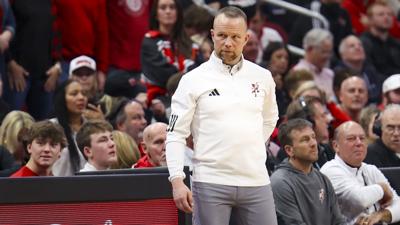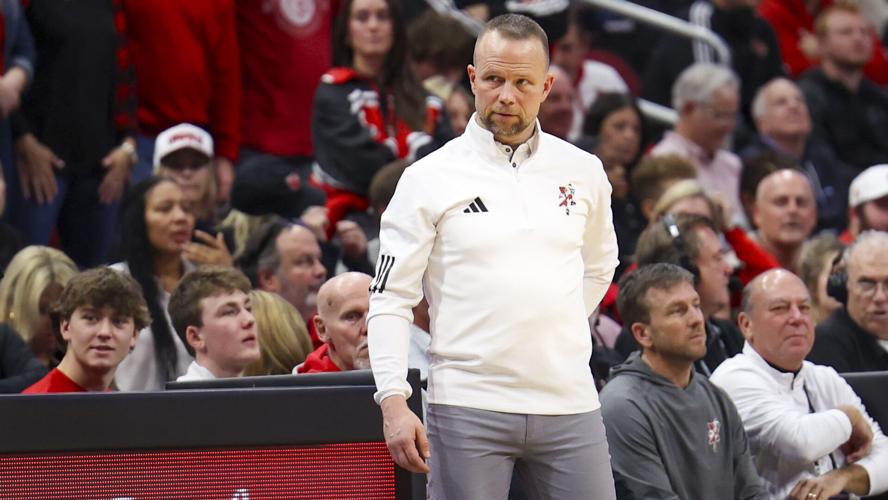LOUISVILLE, Ky. (WDRB) -- A professional basketball player just committed to the University of Louisville.
Take a moment to absorb that statement.
London Johnson, a 21-year-old point guard from Norcross, Georgia, who spent three seasons in the NBA G League, announced Monday that he will join Pat Kelsey's program as part of Louisville's 2026 recruiting class. He is expected to arrive midway through this season and, if all goes according to plan, have two years of eligibility beginning in 2026-27.
The news was first reported by Jeff Goodman of Field of 68.
Louisville | Kentucky | Indiana | Eric Crawford
It's a recruiting win. It's a college basketball curiosity. And it's something that, until a few weeks ago, wasn't even allowed.
From G League to college? Really?
Yes. Really.
Johnson is just the second player in history cleared to play Division I basketball after playing in the G League. The first was Thierry Darlan, a 6-foot-8-inch wing from the Central African Republic who signed with Santa Clara this offseason. Darlan played two full seasons of professional ball — including last year for the Delaware Blue Coats and Rip City Remix — before the NCAA declared him eligible in August.
That ruling cracked open a door no one thought would budge. And Louisville — which first offered Johnson back in 2021 — has now pushed through it.
So how is this allowed?
The short answer is that the NCAA has slowly stopped treating "professional" as a dirty word.
Until recently, playing for a salary disqualified you from NCAA competition. But as international players continued to win eligibility after stints with overseas clubs (where they were technically pros), and as NIL blurred the financial line between college and pro athletes, the NCAA's definition of amateurism began to shift.
Here's the critical nuance: It's not just about whether a player got paid. It's about how much, why, and when.
For players like Darlan and now Johnson, the key was demonstrating that their G League time was more like training than full-on employment. Think stipends. Not salaries. Think developmental contracts. Not multimillion-dollar endorsements.
G League Ignite — the now-defunct outfit Johnson and Darlan both played for — was designed specifically as a pre-draft alternative for high school graduates. It blurred the college-to-pro timeline even before NIL. And when the NCAA approved Darlan's eligibility, it effectively established a new playbook for players who tried the pro route but want a second chance at college.
Johnson likely was able to document the payments he received and what they were for. He's within the NCAA's five-year window from high school graduation. And nothing he received ran afoul of NCAA eligibility rules.
Why would a pro want to play college ball?
Because, frankly, in big-time college basketball compensation can rival or even exceed what G-League players can earn.
With NIL deals and revenue sharing now in play — and big programs offering better facilities, visibility, and structured development — college can offer young pros a more stable platform and a more competitive package. Johnson will have not only a roster spot at Louisville, but national exposure and a chance at the spotlight.
Santa Clara coach Jason Ludwig, whose staff fought through months of compliance work to get Darlan cleared, likened it to landing a mature transfer: “He's coming in as a junior, so it's like adding an older player with real experience.”
For players on the edge of the NBA radar, it's a strategic pivot: real minutes, real exposure, real coaching — and the chance to reset their careers with two years of eligibility.
Why Louisville — and why now?
Louisville has missed on a couple of high-profile 2026 targets, including Taylen Kinney (Kansas) and Colben Landrew (UConn). Top 2026 prospect Tyran Stokes, a native of Louisville, has had the Cardinals on his list but recent reports have him heading elsewhere, possibly Kentucky.
Johnson, once a top-50 high school prospect, offers a different kind of win. A proven scorer (he averaged 10.5 points and 4.1 assists per game in with Ignite before it was shut down), he was less effective when he went into the actual G League against older players. But on a college roster, the 6-foot-3-inch junior will be a mature presence with valuable experience. And he will spend time with the team at practices and games in the second half of this season.
He might well have been a player Kelsey would have pursued even had he landed one of those highly-ranked prospects.
But now, he's also a symbol of Kelsey's willingness to get creative on the recruiting trail.
This isn't just about landing a player. It's about being early adopters of a new pipeline.
The bottom line is this: A G League vet committing to play college basketball is no longer a loophole. It's the landscape.
Louisville Basketball Coverage:
Louisville, Kentucky set to turn up the volume with high-powered exhibition openers
CRAWFORD | Louisville's Kobe Rodgers isn’t a 5-star — but he is a national champion
Coffee with Crawford | Good basketball talk with Calipari, Walz, Pope, Kelsey and more
Copyright 2025 WDRB Media. All Rights Reserved.














